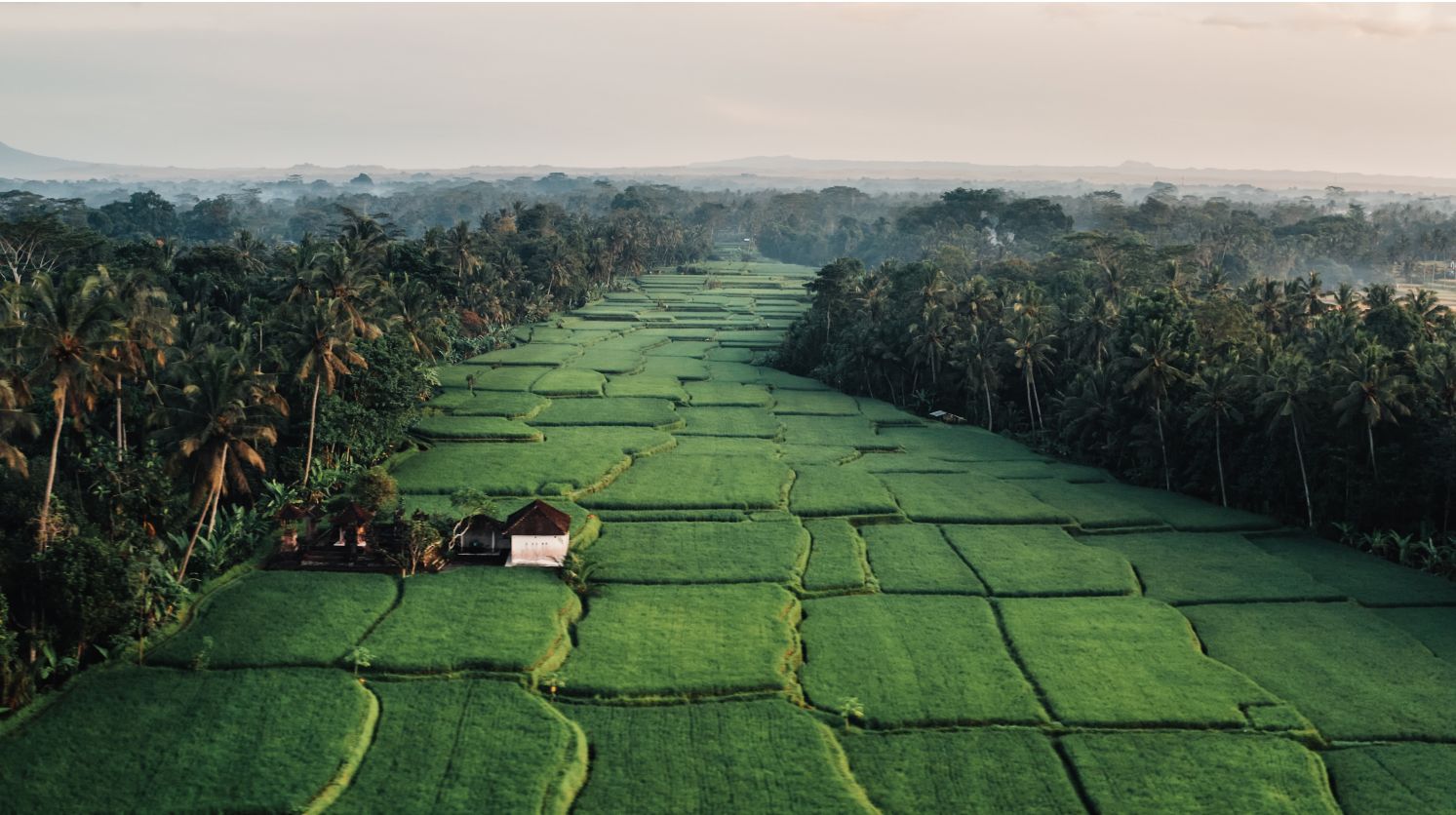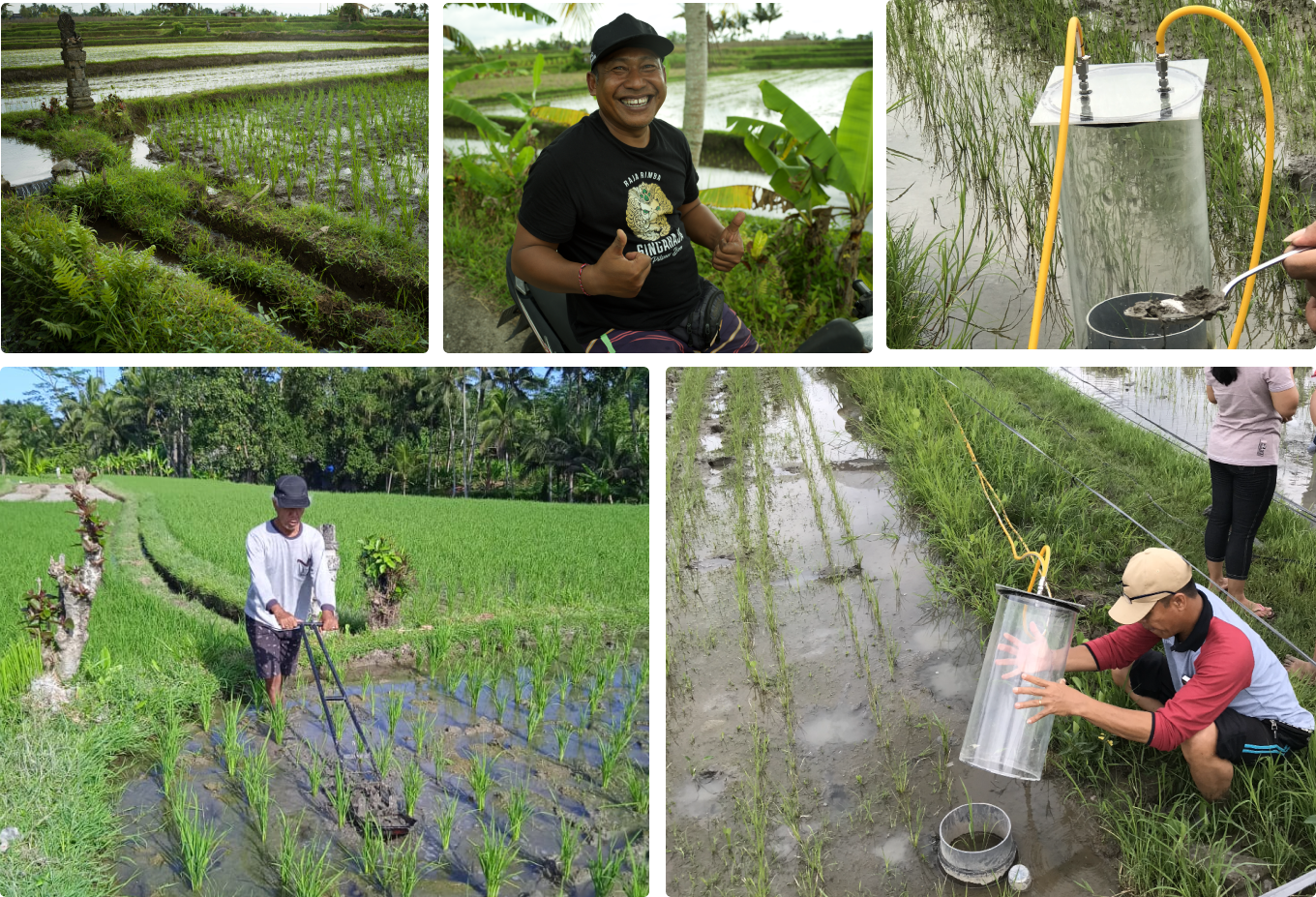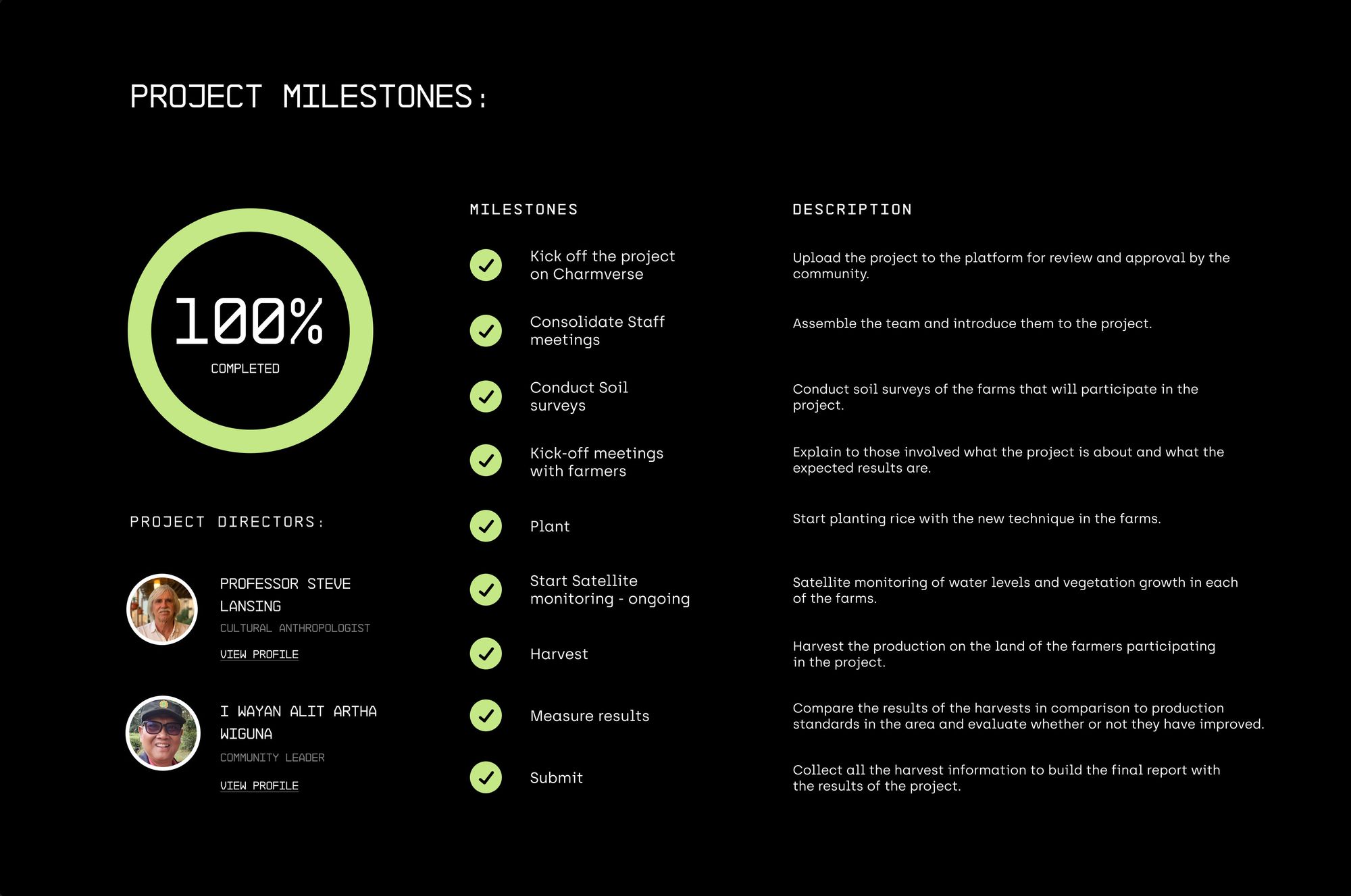Adapting traditional balinese irrigation techniques to reduce greenhouse gas emissions - Pilot project
Read how ancestral irrigation methods helped reduce greenhouse gas emissions by 70% while increasing rice harvests by 23%.


Objective:
The aim of the project is to investigate whether a new rice cultivation regime
can reduce greenhouse gas emissions and increase crop yields.
Project Summary:

Adaptive intermittent flooding is a promising solution that can help farmers improve their crop yields in an environmentally friendly way. Not only does it reduce water usage and greenhouse gas emissions, but it also improves soil health and increases fertilizer retention. Additionally, this practice helps protect rice crops from diseases and pests, as well as extreme weather events such as floods or droughts. Farmers can contribute to global environmental protection efforts by implementing AWD on their farms while reaping the rewards of improved harvests.
Relevant documents:
Project Approach:
Traditionally, rice fields are flooded, which leads to high greenhouse gas emissions and other environmental problems. 18 farmers have decided to take part in the experiment by using an adaptive intermittent regime that is satellite-monitored to reduce greenhouse gas emissions to address these issues. Farmers have also received weed control devices to reduce weed growth in the experimental fields and improve grain yields.
The satellite monitoring shows the Subak Bene fields, highlighting the 18 fields following the adaptive irrigation regime along with the neighboring flooded fields. The preliminary report focuses on Field No. 10, visible in the March 13 satellite image. Satellite monitoring measures whether the fields are flooded, which triggers methane emissions. A more environmentally friendly method of rice cultivation is to use the adaptive irrigation regime, which can reduce emissions from the fields by about 70%. Methane is the second-most damaging greenhouse gas after carbon dioxide.
As part of the experiment, the Impact Fund purchased 20 weed control devices that were distributed to participating farmers. Farmers use these devices to ensure optimal growing conditions for rice plants, as weeds are known to grow more quickly in dry fields than in flooded fields and compete with rice plants, negatively impacting crop yields.
The experimental setup includes the deployment of a Picarro gas analyzer in the field to measure the emission of greenhouse gases such as CH4 and N2O from rice. The gas chamber encloses the sample and has an inlet and outlet port. The outlet port is connected to the Picarro, while the inlet port is connected to a vacuum pump. The Picarro measures emissions as small as parts per billion.
In conclusion, this ongoing experiment is a promising effort to address the environmental problems associated with traditional flooded rice cultivation. By implementing an adaptive irrigation regime and using hand-push machines to reduce weeds, participating farmers are striving to minimize greenhouse gas emissions while increasing crop yields. Satellite tracking and gas analyzer technology provide valuable data to measure the effectiveness of this new technique. The results of this experiment are eagerly awaited. If successful, this project can help pave the way for a more sustainable approach to rice cultivation that benefits both the environment and farmers' livelihoods.

Proyect Results:

After 6 months comparing emissions from flooded fields (FLD) and fields that were left dry except for intermittent irrigation (INT), results concluded that emissions of both gases were much higher in the flooded (FLD) fields.
Methane emissions were reduced by 85% in th experimental plots. N2O was near zero and variable. Of equal or perhaps even greater importance, the harvest yields of rice averaged 30% higher in the INT fields, which were not flooded. The most probably explanation is that nearly all of the nitrogen fertilizer that the farmers apply to the rice is urea, which dissolves in water and can wash away downstream from the flooded paddies, and damage coral reefs when it reaches the sea. So more N fertilizer remains in the experimental plots, protecting the reefs.

Impact Generated:
Observing these results, numerous farmers in Subak Bene asked to join this project. In February 2023 we began a field study with support from Quantum Temple’s Impact Fund. Eighteen farmers volunteered to participate. Eighteen widely separated fields totaling 3.21 ha were planted with Hybrida 05 rice the first week of March 2023, and monitored with satellites. Eighteen other farmers agreed to follow the same schedule of planting and fertilization, but kept their fields continuously flooded. Equal quantities of urea fertilizer were added to all fields 14 days after transplanting. The rice plants in the INT fields grew larger than the plants in the flooded fields. The average harvest was 10.9 tons/hectare in the experimental INT fields, and 6.35 tons/hectare in the continuously flooded FLD fields. Total greenhouse gas emissions were reduced by 85% in the experimental INT fields, calculated from their Global Warming Potential.
Next steps:
From the farmer’s perspective, the most important immediate benefits from adopting our adaptive irrigation regime are the large increase in harvest yields and reduced need for water.
Secondary benefits are reductions in greenhouse gas emissions from their fields, and decreases in the flow of excess urea to the reefs. The next step for this project is to recruit more farmers and subaks to participate, to validate the results of the pilot study. Agricultural extension
agents in cooperation with appreciative farmers from Subak Bene will conduct farmer field schools to explain the project. Duplicating the methods used in Subak Bene, volunteers will agree to monitoring of their fields using Manna Irrigation satellite surveillance, and help draw the boundaries of their fields. The research team headed by Dr I W Alit Arthawiguna will supervise data collection and analysis. The minimum sampling target is 15 farmers from each of three new subaks in addition to Subak Bene. Results of this project will be reported to the Ministry of Agriculture to be evaluated for possible nation-wide adoption.
Researchers:
- J Stephen Lansing,
- Alit Artha wiguna,
- James N. Kremer,
- Ida Bagus Suryawanand
- The farmers of Subak Bena, Bali
